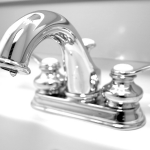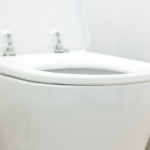3 Burning Questions To Ask About Plumbing Systems
Most folks know to keep track of the water shut-off valve in the house and always have a plunger in the house, but their plumbing knowledge stops there. There's plenty to explore when looking to learn more about the home's plumbing system. From history, rumors, and facts, homeowners should keep reading to discover the exciting story of the home's plumbing.
What's the Deal With "the John"?

To answer this question, one must delve into the past. In 1536, Sir John Harrington invented the great-grandfather of the modern-day toilet. While plumbing existed in ancient civilizations of Egypt, Rome, and Greece, Harrington's toilet is the one that reached notoriety. Why?
Harrington was the godson of Queen Elizabeth I of England. He was well known for his saucy nature, but more importantly, he was famous for making his beloved godmother's stercus (or bodily waste) go away.
However, Harrington named the flushing toilet Jack or Ajax, with references to politics hidden in the name. The insult to a particularly powerful Earl got Harrington exiled, and his toilet was then referred to as The John.
Does Water Direction Reverse South of the Equator?
How many scientists spent their day watching toilets flush at different parts of the globe to study the Coriolis Effect? Too many. And it isn't just scientists. It's a common misconception that toilet water reverses flow south of the Equator.
The misconception comes from the general knowledge that the Coriolis Effect inverts the spin of wind, water, and hurricanes south of the Equator. But, while toilets technically do expel water in a spinning motion, the Coriolis Effect does not impact the water in a visible way on such a small scale. If there were a giant toilet the size of Lake Superior, then perhaps the water would spin inverted.
Because of the minute size of toilets against the Coriolis Effect, the shape of a toilet's basin and the water's point of entry into the basin determine what direction water spins and drains out of the toilet.
How Many Gallons of Water Can a Leaky Faucet Waste?
The short answer to this question? A lot. Leaky faucets are an often overlooked cause of extremely high water bills, moldy smells, and even rust in homes. Ten percent of homes in the United States have leaky faucets that waste 90 gallons of water a day.

Over the year, unchecked leaks can add up to 10,000 gallons of wasted water. That's no small number; 10,000 gallons of water can fill a small pond or two. An average amount of water consumed by a family of four sits around 12,000 gallons a month. When amounts are higher than that, there are likely extensive leaks in the home. These leaks can increase water bills by 10% or more.
There's more to plumbing systems than just plungers and flushes, and these facts are just the tip of the iceberg. A qualified plumbing expert can help homeowners get an in-depth understanding of their home's plumbing system.
About Anytime Plumbing, Inc
The lights of Las Vegas, NV are always on, which is why Anytime Plumbing, Inc is always open. Their top-notch staff knows that their hometown never sleeps, and are prepared to handle any plumbing situation that crops up in Las Vegas. Their 24/7 service comes with no hidden fees for weekend and night calls, and their work is worth every penny. Contact them to schedule plumbing service today!














